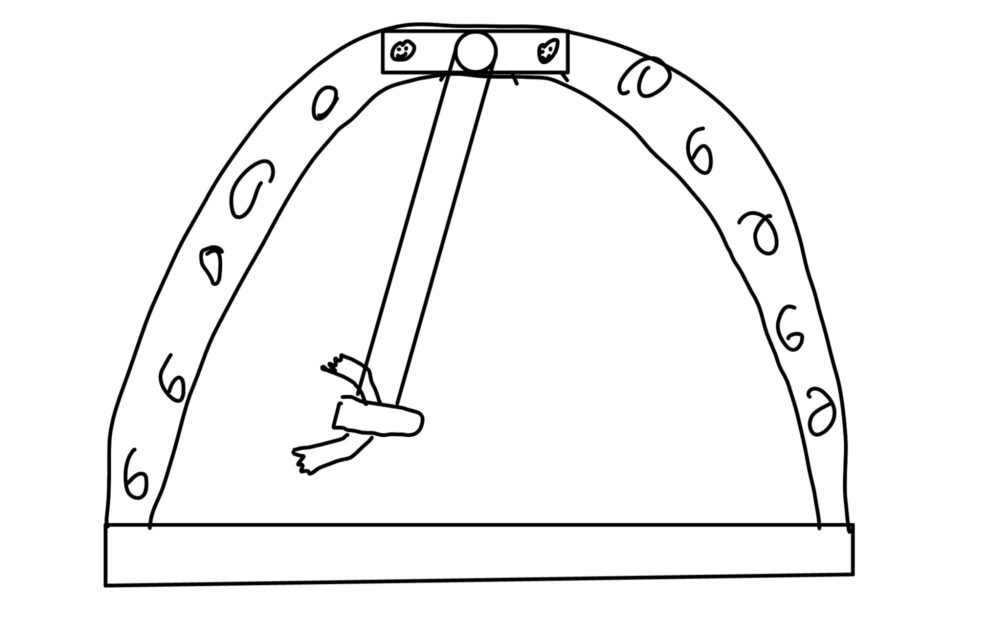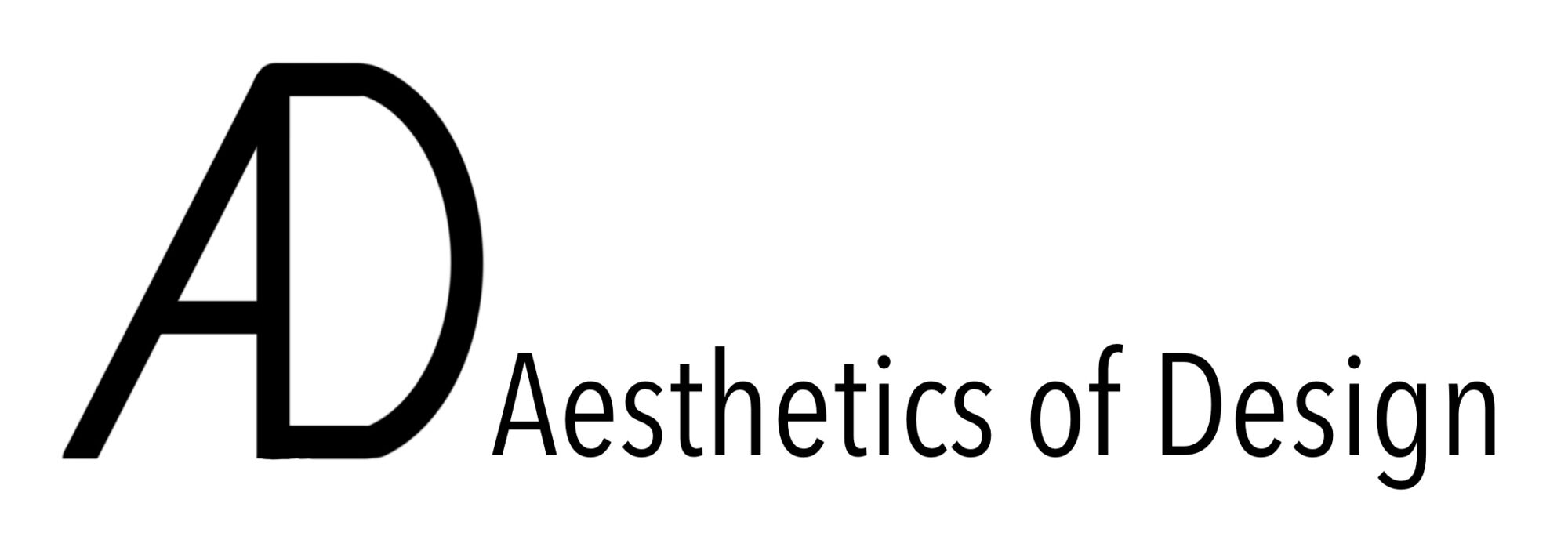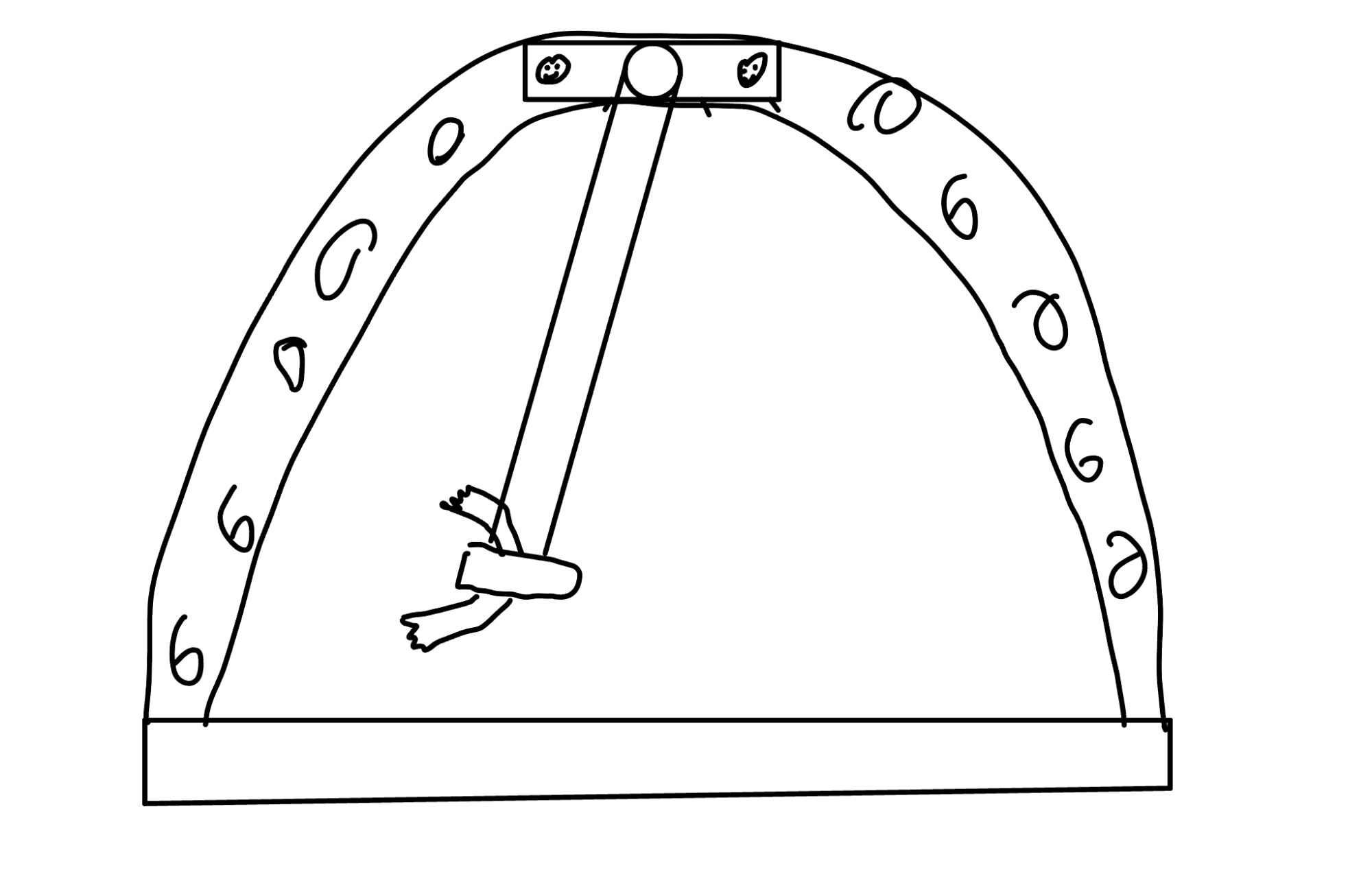Design Preview Report: Art Deco Pendulum
For my design project, I am going to create an art deco pendulum. I think movement is really important to the art deco era, so something that has movement as its central component will exemplify the era well. For my entire life, I have been interested in moving things. My interests mostly center around trains, which were a very common subject of Art Deco art and architecture. They were streamlined, and their stations soared high with many concrete and steel components. A lot of posters were made at the time, too, with simplistic yet sleek advertising for the travel that passengers would soon be embarking on. Many trains in this era looked more like rockets than trains, with the functional components being hidden by steel sideskirting. An example of this streamlining is the Commodore Vanderbilt, a 4-6-4 Hudson locomotive built for the New York Central Railroad in 1926 and streamlined in 1934.
The above image shows the Commodore Vanderbilt Locomotive. It is from International News Photos and was uploaded to Wikimedia Commons, February 22, 1935.
The streamlining made this 8-year-old locomotive look practically brand new and made the New York Central jump into what they envisioned as the future. I see this era as more of a past vision of an idealistic future and less of a realistic future. It reminds me of the Spongebob episode where “everything is chrome in the future.”
The inspiration for the pendulum aspect comes from the trains themselves, or more specifically, the Disneyland Mark I monorail. This early monorail design exemplifies the same idealistic future that many designers foresaw in the art deco era. It is a train that looks like a rocket, and no functional components are visible. The beauty of the train allows a viewer to suspend their disbelief and forget that it rides on a large concrete rail. The train appears to fly, so I thought my pendulum would fly as well. The tip of the pendulum will be a 3d printed model of the Disneyland monorail, and the arm will be a wooden dowel that has been painted to look like concrete. The monorail itself will be as detailed as the real thing, which is to say barely at all. It will have pointed noses on both ends, bubbles for the operators to view out of the top, and windows on the sides. It will also have pontoon-like fins on the bottom. As for paint, the monorail will be painted in different metallic colors, except for the windows, which will be a dark bluish-gray. The actual Disneyland monorails are painted in different bright colors, such as orange and yellow. I might still include color elsewhere, but I think I want the monorail to look more bullet-like and show raw materials.
The structure that the pendulum swings on will take more inspiration from art deco train stations. For instance, Cincinnati Union Station is a very large concrete arch. There are several concrete pillars in the courtyard out front. My inspiration from this will be the shape of the hanger, which will also be an arch. I might make either end of the arch look like a little platform for passengers to board the monorail, but I haven’t settled on this idea yet.

The above image shows Cincinnati Union Terminal. This image was taken by Tysto on August 10, 2005, and uploaded to Wikimedia Commons.
I’ll start the construction of the projected with a wooden base and frame. I’ll use a piece of 1×4 for the base, and I’ll cut out a piece of ½ inch plywood for the arch. I can do all of this construction in the carpentry shop where I work, using the scraps that I have access to. The base will be about 18 inches wide, and the arch will be a semicircle that spans the width of the base. To reinforce the arch’s attachment to the base, I’ll add some small “columns” from plywood that will be screwed into the base and arch. I will clad the columns with 3D printed PLA that will make them look more decorative and add to the art deco aesthetic. These columns will have trapezoidal shapes at the top, which vary in size, giving them a cartoonish and exaggerated look.

The above image shows an early sketch that I drew of what I want the arch to look like.
At the top of the arch, there will be a skateboard bearing. The pendulum arm will be a piece of 1×3 that is attached to the bearing with a wooden dowel. The monorail will be attached to the bottom of the arm. There will be a slot in the top of the monorail that allows the arm to fit into it. Since the dowel might be seen from the front of the arm, I will add a piece of ¼ inch plywood facing to cover it. The monorail will be printed in 2 parts so that it can be hollow but not open at the back. I will add lead weights to the hollow space in the monorail to increase the period of time that the pendulum swings over. Hopefully, the pendulum will swing fairly slowly. If not, I could also cut a groove in the back of the 1×3 for more weight.
My plan, if I decide to add monorail stations, is to attach them to the 3D-printed columns on the sides. These columns will also act as stops, so the pendulum can only swing a certain distance. The stations will also be fairly simple 3D-printed structures. They will look like little houses with a clock at the top. The clocks will be set 12 hours apart from each other to symbolize the time difference over the long distance that the monorail is traveling. The buildings will be SLA-printed, so they will be a little more detailed than they would be if they were FDM-printed. I can do all of the 3D printing at home or the Idea Forge.
The entire structure will be painted using various techniques. I will spray-paint the wood structure with a concrete color and weather it with a black wash. The black wash will consist of isopropyl alcohol and India Ink. I’ll also dry brush some black onto the columns for artificial shadows. The monorail will be entirely hand-painted with acrylics. I’ll airbrush the station buildings a greenish color, to look like sort of a glass or metallic thing. Think Emerald City in the new Wicked movie. I’ll hand-paint the clocks on the stations white with black hands. I’ll “paint” the hands with Sharpie.
I think that this entire structure will exemplify Art Deco styling in many ways, the most prominent of which is its simplicity. Art Deco was inspired by industrialization and new construction techniques that were coming to prominence in the 1920s. Its designs were sleek but practical, not overbearing but extremely beautiful. Everything in my design is supposed to take inspiration from one aspect of this movement or another. Art Deco emphasized symmetry, and this will be evident in the concrete columns on either side of the structure. Both columns, including the opposite clock hands on the stations, will be symmetrical. Art Deco used a lot of glass and metal, so the stations will feature representations of both of these materials.
A lot of things that were styled during the Art Deco era moved. These included trains, boats, and cars. As I mentioned before, I tend to gravitate to the trains, which is why I’m including a monorail. This is a train, but it’s a better representation of what Art Deco designers thought a futuristic train would look like. Monorails are generally sleek and streamlined, especially the Disneyland Monorail, which is what mine will be based on. Rather than go off of their current design, I’ll take more inspiration from the Mark I monorail, which was mostly constructed with steel, as opposed to the current Mark VII monorail, which is mostly fiberglass. I think the original monorail is a little clunkier looking, but I think that’s better for this project because people during the Art Deco era did not have the materials available to make a more futuristic-looking train.

The above image shows the Disneyland Mark I Monorail. This image, from November 26, 1959, is from the Orange County Archives and was uploaded to Wikimedia Commons.
I think the elements that I’ve already described are enough for the construction of the project, but I’ll add some other flourishes to plus the design a bit. A lot of Art Deco-era trains took inspiration from the Greek God of the West Wind, Zephyrus. These included the Denver Zephyr, the Illinois Zephyr, the Pioneer Zephyr, and many more. I think I’ll have little 3D-printed busts of Zephyrus’s head on either side of the arch. These will be sleek and simple. The hair will billow to the sides and eventually end in a point, as if the heads are moving very fast.

The above image shows Zephyrus, God of the West Wind. It is a wood engraving from 1878, uploaded to Wikimedia Commons.
I can’t wait to embark on the construction phase of this project. I think once all 3D-printed components are CADed, I can build everything very quickly. Painting will also be fun. There are a few paint techniques I want to try that I’ve never done before, but I think my experience with theatrical and model painting will come in handy. As I write this, I am backstage, watching the final technical rehearsal for a stage production which I built and painted several set pieces for. This project will use many of the same processes that I use in theatre, and I think it will turn out very similarly to how I see it in my head.
Works Cited
Train Lover. “The Commodore Vanderbilt.” Streamliner Memories, November 7, 2022 https://streamlinermemories.info/?p=21656
Anika D. “What is Art Deco? Everything You Need To Know About the Most Popular Early 20th Century Decorative Style.” Artsper Magazine, Mar 17, 2025 https://blog.artsper.com/en/a-closer-look/art-movements-en/what-is-art-deco-decorative-style-meaning/


2 Comments. Leave new
Your connection between Art Deco and movement is really well thought out, especially when you were tying in the monorail as a futuristic train is both conceptually strong and visually fitting. I’m curious: how do you plan to balance the weight of the pendulum so that it swings smoothly without compromising the design of the monorail?
Hi Sam, this concept is super compelling. Your blend of movement, materiality, and historical homage is so well thought out. I love how the pendulum becomes more than a mechanism; it’s a story in motion. The idea of using Zephyrus busts is such a poetic detail, like wind powering the design. Have you considered giving the monorail a subtle light inside or under it to create a soft glow as it swings? I feel like that would give it a real sense of presence, especially if the rest of the palette stays muted and metallic.